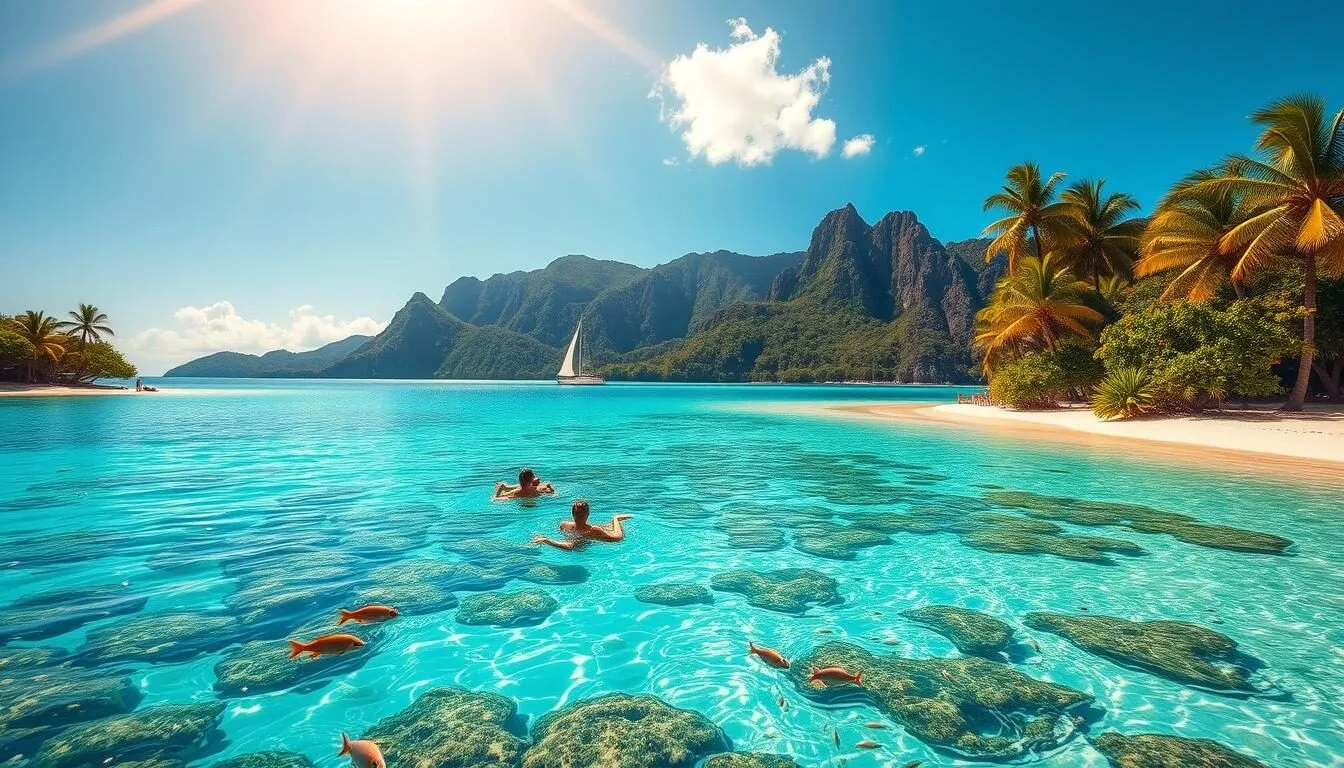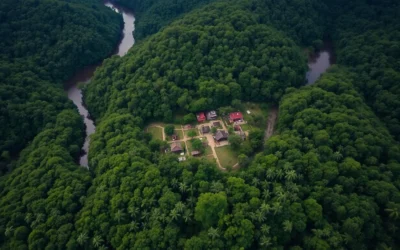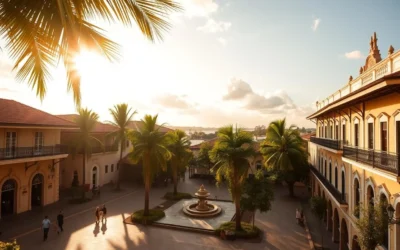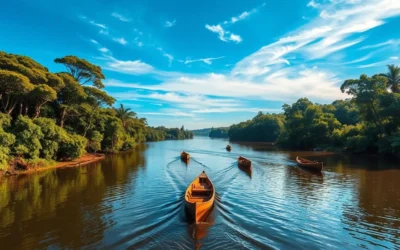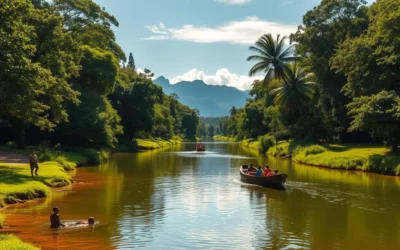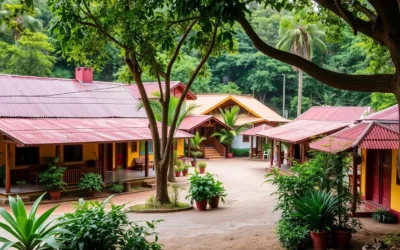✓ Accommodations✓ Flights✓ Rental Cars
You’ve likely never heard of the Salvation Islands, a hidden gem off the coast of French Guiana. This trio of islands is a unique destination that combines breathtaking natural beauty with a dark and complex history.
As part of South America’s overseas department of France, the islands offer an experience like no other. With their swaying palm trees and azure waters, they appear as a tropical paradise. Yet, they were once the site of one of the world’s most notorious penal colonies, making them a fascinating destination for history buffs and adventure seekers alike.
Visiting the Salvation Islands is a journey through French Guiana’s rich cultural heritage, providing insights into a complex colonial past that shaped this South American territory.
Discovering the Emerald Jewels of French Guiana
The Salvation Islands, situated just off the coast of French Guiana in South America, present a fascinating mix of paradise and purgatory. This archipelago, known as Îles du Salut, is a captivating destination that weaves together history, nature, and intrigue.
As you explore the islands, you’ll be captivated by the three emerald islands that make up the Salvation Islands. The islands offer a striking contrast between their natural beauty and their dark history, creating a unique place that feels both paradise-like and haunting.
- The lush jungle canopy covering the islands gives little hint of the historical structures hidden beneath, inviting you to explore and discover.
- Nature has reclaimed much of the islands, with tropical vegetation growing over and around the remnants of the penal colony, creating an atmospheric blend of natural beauty and human history.
- The islands’ isolation, which once made them perfect for a prison, now makes them an exclusive destination for travelers seeking off-the-beaten-path experiences in French Guiana.
As you wander through the islands, you’ll find yourself surrounded by the sights and sounds of the jungle, with the Atlantic Ocean providing a stunning backdrop to your exploration. The islands are covered in tropical greenery, with coconut palms swaying in the ocean breeze and hiking trails leading to breathtaking viewpoints.
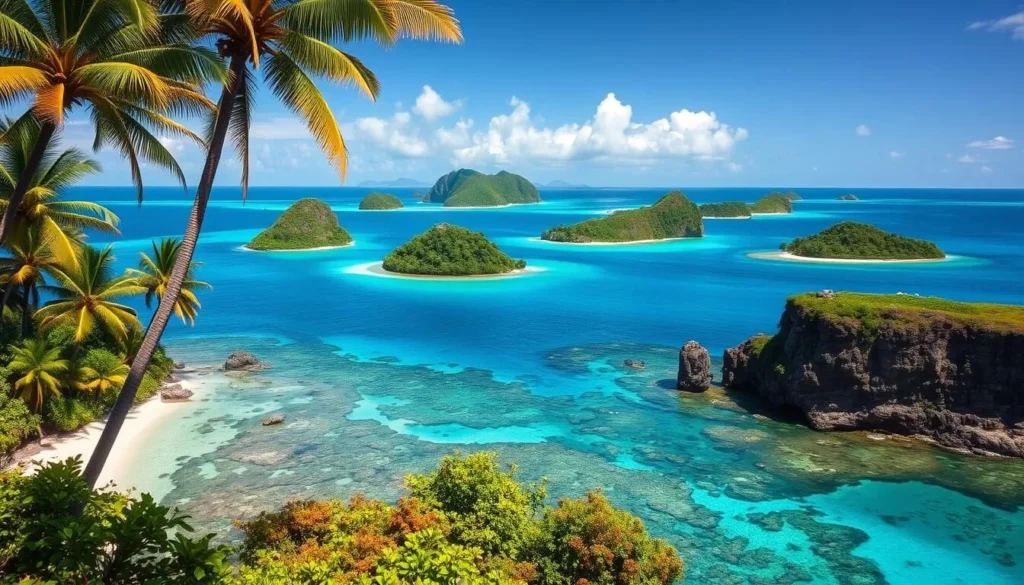
The wildlife on the islands thrives, from playful monkeys and vibrant macaws to the tiny golden frogs that hide in bromeliads. This blend of history, nature, and isolation makes the Salvation Islands a truly unique destination, sitting just off the coast of French Guiana.
The Dark History of the Penal Colony
French Guiana’s Salvation Islands hold a somber history, having been the site of one of the world’s most feared penal colonies. The Îles du Salut operated as a penal colony from 1852 to 1953, during which time they became known for their harsh conditions.
You will learn about the infamous penal colony that operated on these islands, becoming known as one of the most brutal prison systems in the world. The French government sent thousands of prisoners to this remote colony, where harsh conditions, disease, and the shark-infested waters made escape nearly impossible.
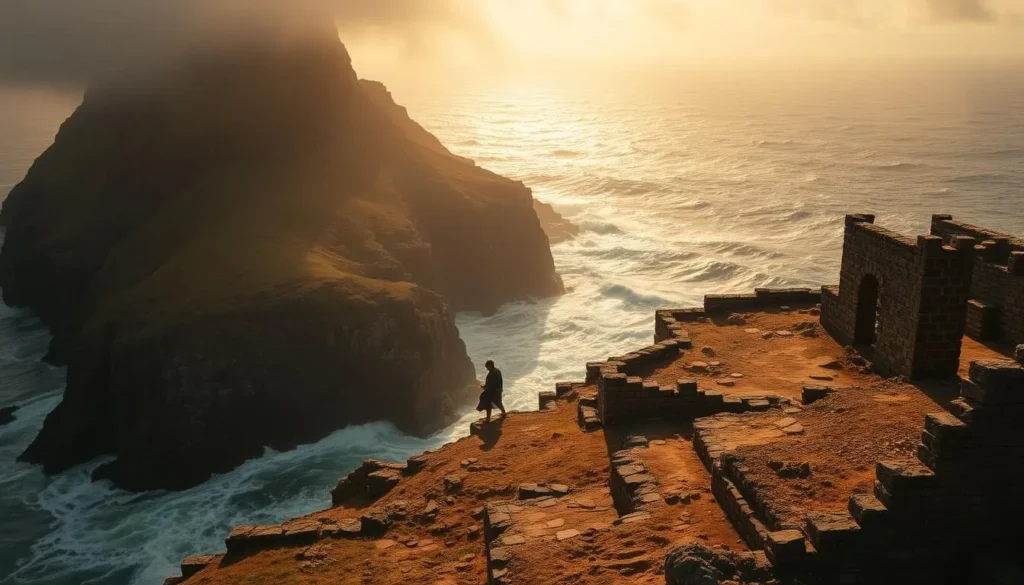
The islands gained worldwide notoriety through Henri Charrière’s book, “Papillon,” which chronicled his alleged escape from the colony and brought attention to the brutal conditions prisoners endured. Life on the islands was grueling: malnutrition, disease, and violence were rampant.
You’ll discover how life for prisoners varied across the three islands, with different levels of security and treatment depending on the severity of their crimes or political significance. The colony’s dark history includes the infamous Dreyfus Affair, where Captain Alfred Dreyfus was wrongfully imprisoned on Devil’s Island, leading to a major political scandal in French Guiana.
Walking through the remains of the colony today gives you a sobering glimpse into the harsh realities faced by those who were sent to this remote corner of French Guiana, never expecting to return to mainland France.
- The harsh conditions and brutal treatment of prisoners in the penal colony.
- The significance of Henri Charrière’s memoir, “Papillon,” in highlighting the colony’s harsh realities.
- The varied experiences of prisoners across the three islands.
- The historical significance of the Dreyfus Affair and its impact on France.
How to Reach the Salvation Islands
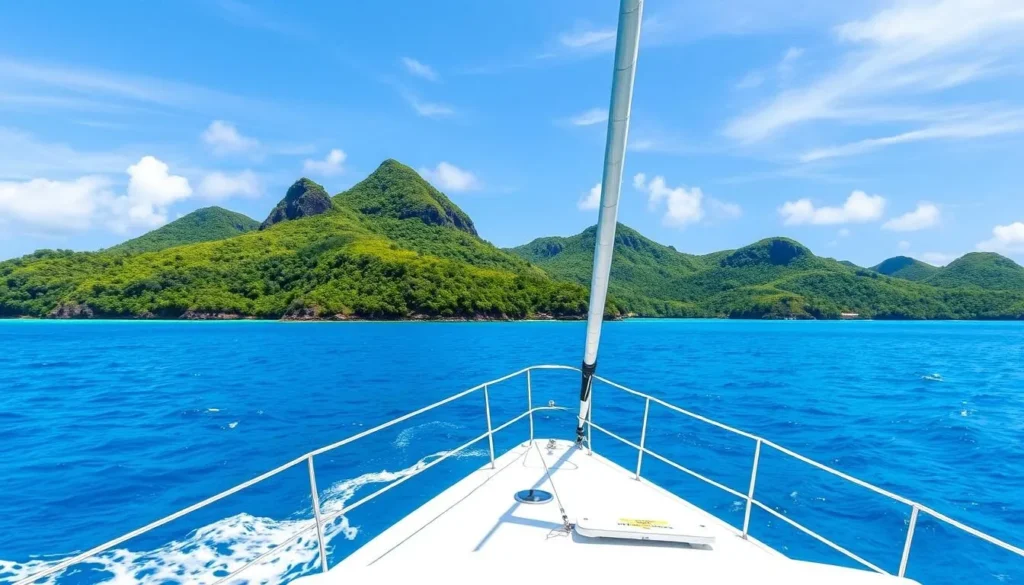
Traveling to the Salvation Islands involves a boat ride from Kourou, a coastal town in French Guiana. Boats to the Îles du Salut leave from Kourou, approximately an hour’s drive from Cayenne. The journey to Île Royale, the main island, takes about 1 hour by catamaran or motorboat.
Trip Options and Accessibility
Day trips are the most common way to visit the Salvation Islands, lasting 6-8 hours, including 4-5 hours of exploration time on the islands. If you’re prone to motion sickness, prepare accordingly as the waters can be choppy, especially during the rainy season. Most tour operators offer structured day trips that include transportation, a guide, and sometimes meals.
Key Considerations:
- You’ll need to take a boat from Kourou in French Guiana to reach the Salvation Islands.
- Day trips give you about 4-5 hours to explore the islands before returning to the mainland.
- The boat transfer process involves boarding smaller vessels for the final approach, which can result in getting splashed.
For a more immersive experience, some trips include visits to both Île Royale and Île Saint-Joseph, though this creates a tighter schedule. Wear water-resistant clothing or bring a change of clothes to be prepared.
Exploring Île Royale: The Administrative Heart
The island of Île Royale is a must-visit destination in French Guiana, boasting a mix of penal colony history and lush greenery. As the largest and most accessible of the Salvation Islands, Île Royale served as the administrative center of the penal colony. Upon arrival, you’ll be greeted by crumbling prison buildings, their moss-covered walls standing as silent witnesses to decades of despair.
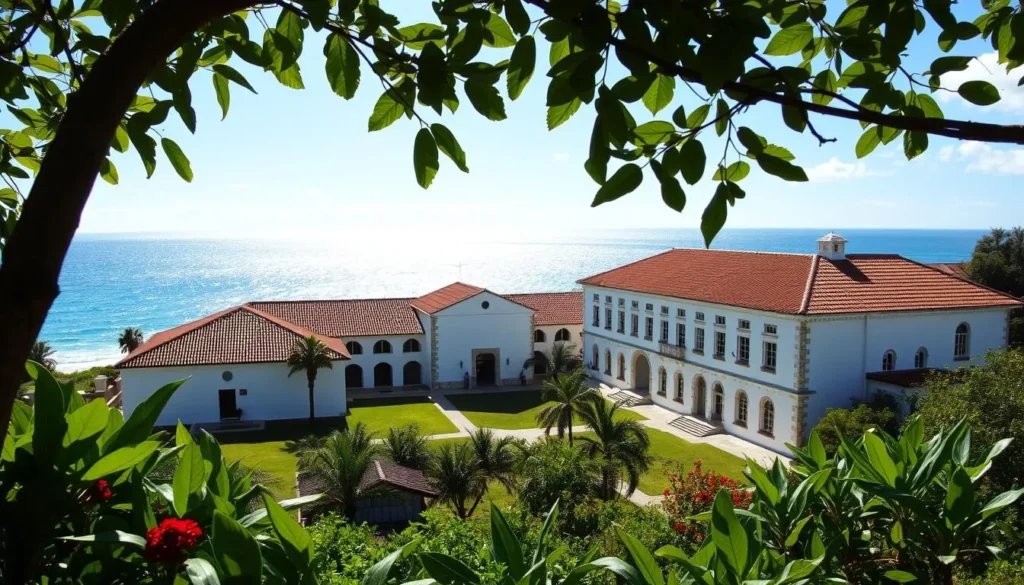
Wandering through the former governor’s house, the hospital, and the cells, you’ll feel the weight of the stories they hold. The island’s lush greenery and sweeping ocean views provide a stark yet welcome contrast to its grim past. Keep an eye out for the island’s modern inhabitants—curious monkeys and colorful birds that seem oblivious to the history beneath their feet.
| Attractions | Description |
|---|---|
| Former Governor’s House | Explore the historic residence of the penal colony’s governor |
| Hospital | Visit the former hospital where prisoners were treated |
| Cells | Witness the harsh conditions faced by prisoners in the cells |
Overnight Stay Options
For those wanting more than a day trip, Île Royale offers the only overnight accommodation option among the Salvation Islands. A rustic guesthouse, converted from former prison buildings, provides a unique if somewhat eerie place to stay. You’ll have the opportunity to experience the island’s tranquility and observe its vibrant wildlife up close.
Located in the heart of French Guiana’s infamous islands, Île Royale is a fascinating destination that combines history, nature, and adventure, making it a must-visit place in this region of French Guiana.
Île Saint-Joseph: The Island of Solitary Confinement
Île Saint-Joseph, known for its solitary confinement cells, stands as a grim reminder of the harsh realities of the prison colony in French Guiana. This island, part of the Salvation Islands, was where the most difficult prisoners were sent to be broken in body and spirit.
The island is quieter than its neighbor, Île Royale, but the eerie silence speaks volumes about its dark past. As you explore the overgrown ruins, you feel like stepping into a time capsule, where nature is slowly reclaiming what man once built. The dense jungle surrounding the prison structures adds to the haunting atmosphere.
- The island’s prison ruins are being reclaimed by the jungle, creating an eerie atmosphere.
- You can see the remains of the notorious solitary confinement cells, tiny spaces that drove prisoners to madness.
- Unlike Île Royale, Saint-Joseph offers a quieter, more contemplative experience.
Walking through Saint-Joseph gives you a visceral understanding of the prison colony’s brutality, making it an essential visit for those interested in this dark chapter of French Guiana‘s history.
Devil’s Island: The Notorious Outpost
With its treacherous shores and dark past, Devil’s Island stands as a testament to the harsh penal history of French Guiana. As the smallest and most feared island in the Salvation Islands, Devil’s Island is steeped in legend, primarily due to its role as a prison for political prisoners.
You can only view Devil’s Island from a distance, as it remains closed to visitors due to its dangerous currents and rocky shores. Despite this inaccessibility, the island holds a significant place in the penal history of French Guiana, being reserved for those the government wanted to isolate permanently.
- The island’s notorious reputation was cemented by the wrongful imprisonment of Captain Alfred Dreyfus, a case that became a symbol of injustice and anti-Semitism.
- Mentions in the book “Papillon” further solidified its infamous status.
- Even from afar, you can appreciate the island’s forbidding appearance, with its rocky shores and dense vegetation, evoking a sense of the isolation prisoners felt.
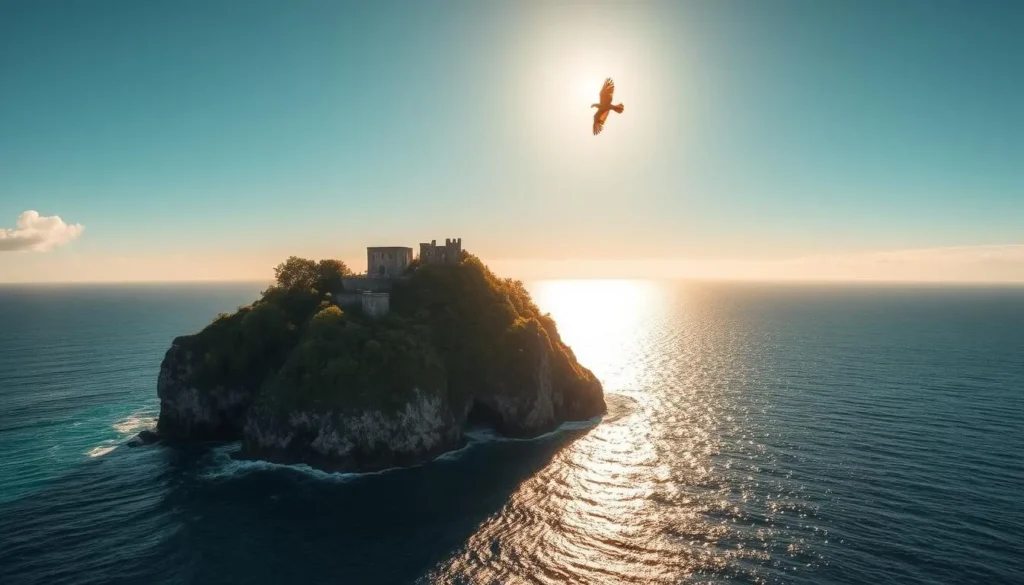
The name “Devil’s Island” evokes dread and hopelessness, characterizing this prison place where escape was virtually impossible. Viewing it from a distance completes your understanding of the three-island prison system that made the Salvation Islands one of history’s most feared penal colonies.
Top Activities on the Salvation Islands, French Guiana: Best Things to Do
French Guiana’s Salvation Islands are a treasure trove of activities, ranging from exploring ancient prison ruins to spotting diverse wildlife. As you visit the islands, you’ll discover a unique blend of history, adventure, and natural beauty that makes for an unforgettable experience.
Exploring Historical Prison Ruins
The Salvation Islands are home to extensive historical prison ruins, particularly on Île Royale and Île Saint-Joseph. You can walk through the crumbling cell blocks, administrative buildings, and punishment areas, gaining insight into the lives of the prisoners who were once held here. The prison buildings stand as a testament to the harsh conditions faced by those who were incarcerated.
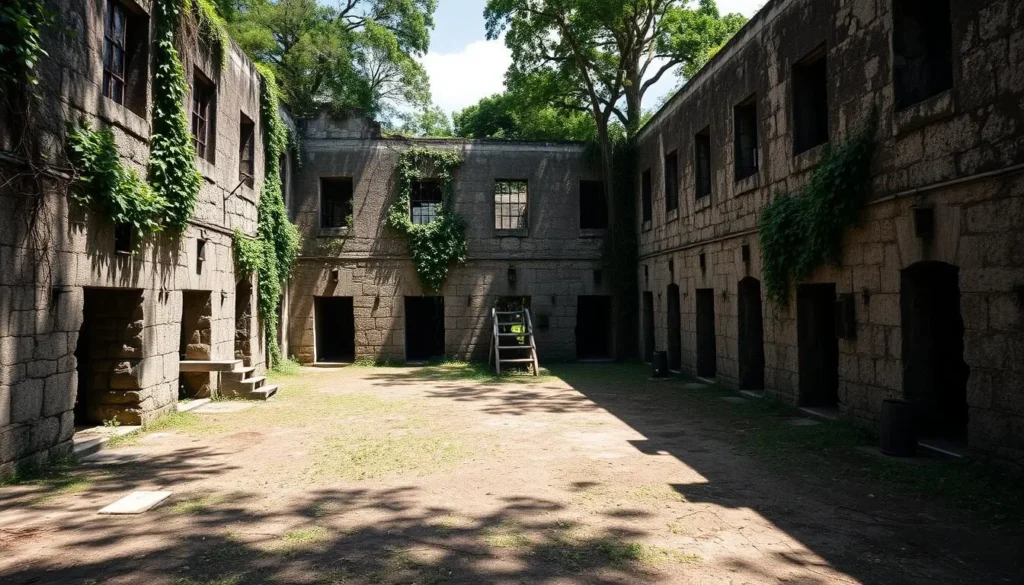
Wildlife Spotting
The islands are a haven for wildlife enthusiasts, with various monkey species, agoutis, and numerous birds calling the islands home. As you explore the islands, you’ll have the opportunity to spot these creatures in their natural habitat, making for a fascinating experience.
Swimming in Designated Areas
While the surrounding waters can be hazardous due to strong currents and sharks, there are designated areas where you can safely swim. The Prisoners’ Pool on Île Royale is a popular spot, offering a historically significant and refreshing experience.
Hiking Island Trails
The islands offer well-marked trails that take you through lush vegetation to viewpoints with spectacular panoramas of the Salvation Islands and the Atlantic Ocean. This is an ideal way to experience the natural beauty of the islands while gaining historical insights.
| Activity | Location | Description |
|---|---|---|
| Exploring Prison Ruins | Île Royale, Île Saint-Joseph | Walk through crumbling cell blocks and administrative buildings |
| Wildlife Spotting | All Islands | Spot monkeys, agoutis, and numerous bird species |
| Swimming | Designated areas on Île Royale and Île Saint-Joseph | Swim in safe areas, such as the Prisoners’ Pool |
| Hiking | All Islands | Explore well-marked trails with historical insights and natural beauty |
Whether you choose to explore independently or join a guided tour, the Salvation Islands offer an adventure like no other. This unique corner of the world is waiting to be discovered.
Practical Tips for Your Visit
To have a memorable and enjoyable day trip to the Salvation Islands, consider these practical tips. As you prepare for your adventure, being well-prepared will enhance your experience on this island off the coast of French Guiana.
What to Bring
Packing the right essentials is crucial for a comfortable day trip. Make sure to bring comfortable walking shoes, sunscreen, bug spray, water, and snacks, as facilities on the islands are limited. A waterproof bag is highly recommended for the boat journey to protect your belongings from splashes.
Dining Options
For dining, there’s a small, basic restaurant near the pier on Île Royale that serves local dishes and drinks. While it’s a convenient option for lunch, if you have specific dietary needs, consider bringing your own food to ensure you have suitable options during your trip.
Photography Opportunities
The Salvation Islands offer spectacular photography opportunities, with historical ruins and natural beauty to capture. Bring your camera or binoculars in waterproof protection to make the most of your visit and enjoy the scenic areas.
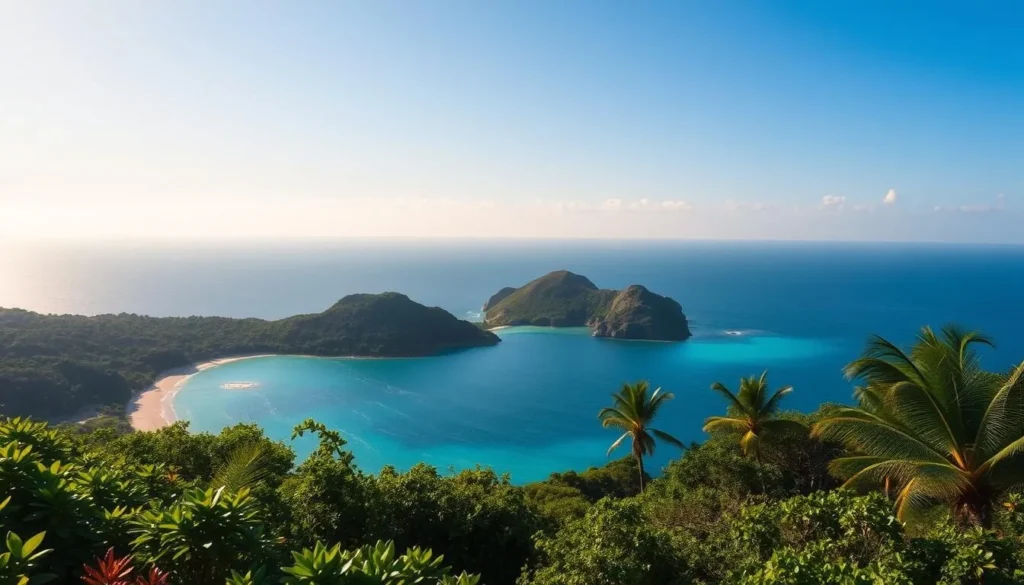
Best Time to Visit the Salvation Islands
When planning your trip to the Salvation Islands in French Guiana, timing is crucial. The dry season, from July to December, is the best time for a visit, offering smoother boat rides and drier hiking trails.
The dry season allows for easier navigation of the islands’ historical sites and natural areas. In contrast, the rainy season (January-June) brings lush greenery but also challenges like slippery trails and turbulent seas. It’s also important to check the schedule of the nearby Kourou Space Center, as the islands are closed during rocket launches.
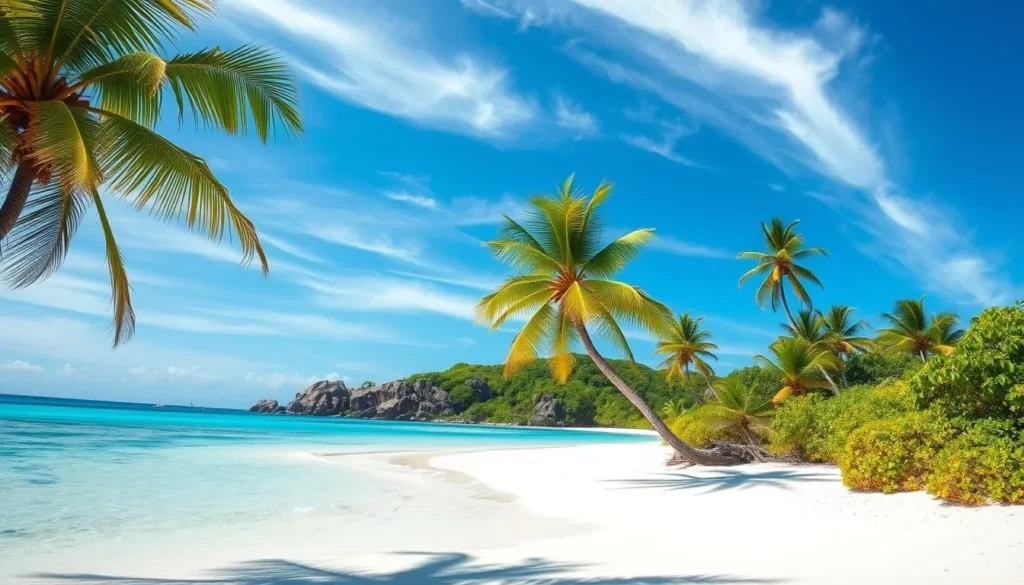
Temperatures remain warm year-round, averaging between 75°F and 88°F. If you’re flexible, aim for August-October for the best conditions. This period offers clear skies for photography and comfortable exploration of these historically significant islands.
Conclusion
As you explore the Salvation Islands, you’ll discover a fascinating mix of dark history and pristine natural beauty that defines this corner of the world. Your visit to the Îles du Salut offers a rare opportunity to experience one of the world’s most fascinating historical sites, where natural beauty and dark human history create an unforgettable contrast.
The islands’ transformation from places of suffering to peaceful nature havens demonstrates how time can heal even the darkest chapters of human experience. Whether drawn by history, wildlife, or adventure, visitors are rewarded with unique experiences.
As you depart, you’ll carry not only photographs but a deeper understanding of human resilience and nature’s power to reclaim troubled places. Your journey to the Salvation Islands completes any visit to French Guiana, combining historical exploration, natural beauty, and a unique experience.
—
The above is subject to change.
Check back often to TRAVEL.COM for the latest travel tips and deals.
